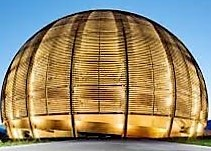Speaker
Description
In addition to the insights gained by studying the galactic evolution of chemical elements, short lived radioisotopes contain additional information on astrophysical nucleosynthesis sites.
Meteorites can carry information about the nucleosynthetic conditions in the early Solar System using short lived radioisotopes [1][2], while detections of live isotopes of cosmic origin in the deep sea crust help us understand recent nucleosynthetic processes in the Solar neighborhood [3]. We use a three dimensional, high resolution chemical evolution code to model the conditions at the time of the formation of the Solar System, as well as to explain why different classes of radioisotopes should often arrive conjointly on Earth, even if they were produced in different sites. Further, we included radioisotope production into a cosmological zoom-in chemodynamical simulation of a Milky Way-type galaxy, which provides a map of gamma-rays from the decay of radioactive Al-26 consistent with the observations by the INTEGRAL instrument [4].
[1] Lugaro, Ott, Kereszturi, 2018 PrPNP 102, 1L
[2] Côté et al., 2021 Science 371, 945
[3] Wallner et al., 2021 Science 372, 742W
[4] Kretschmer et al., 2013 A&A 559, A99




